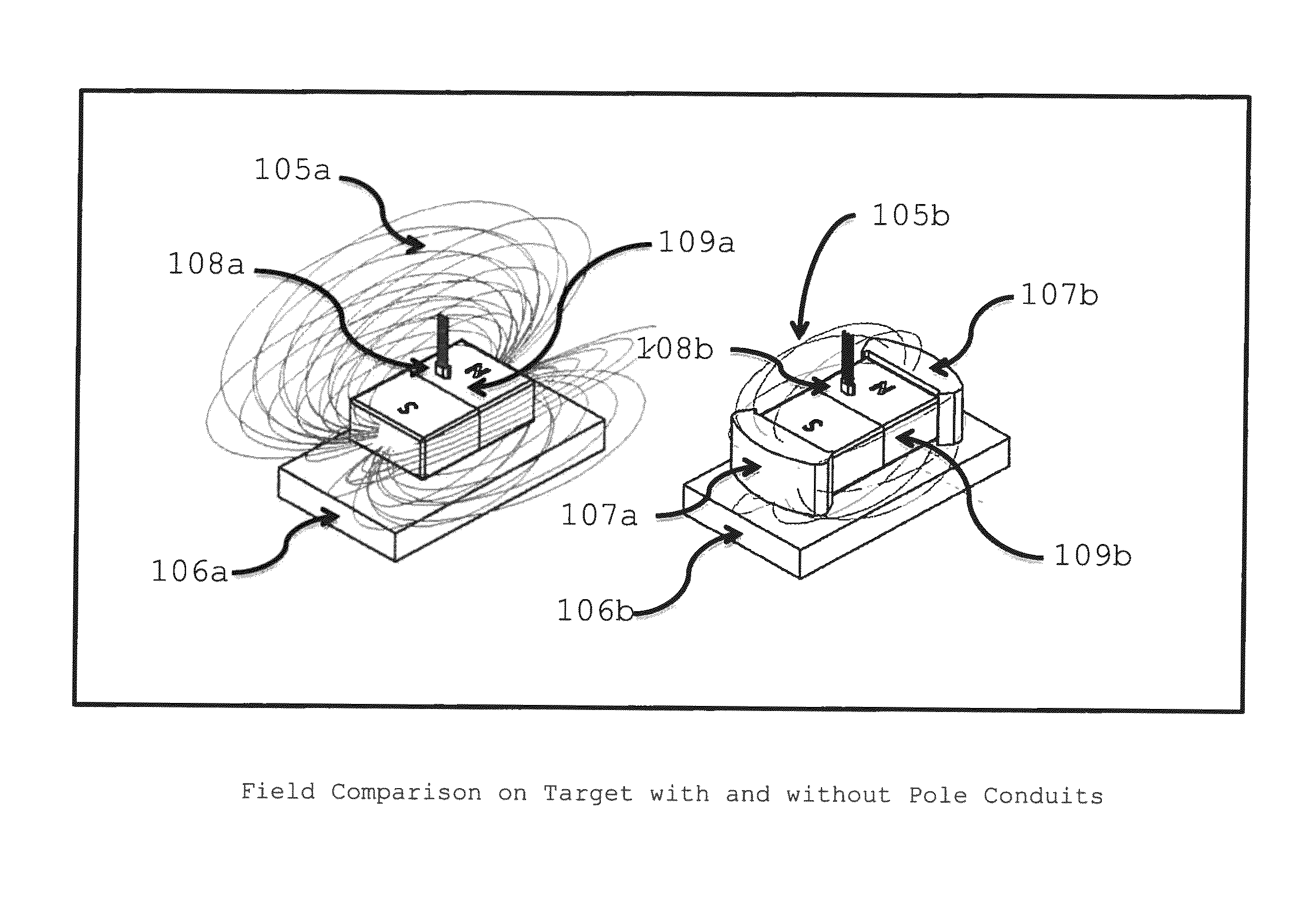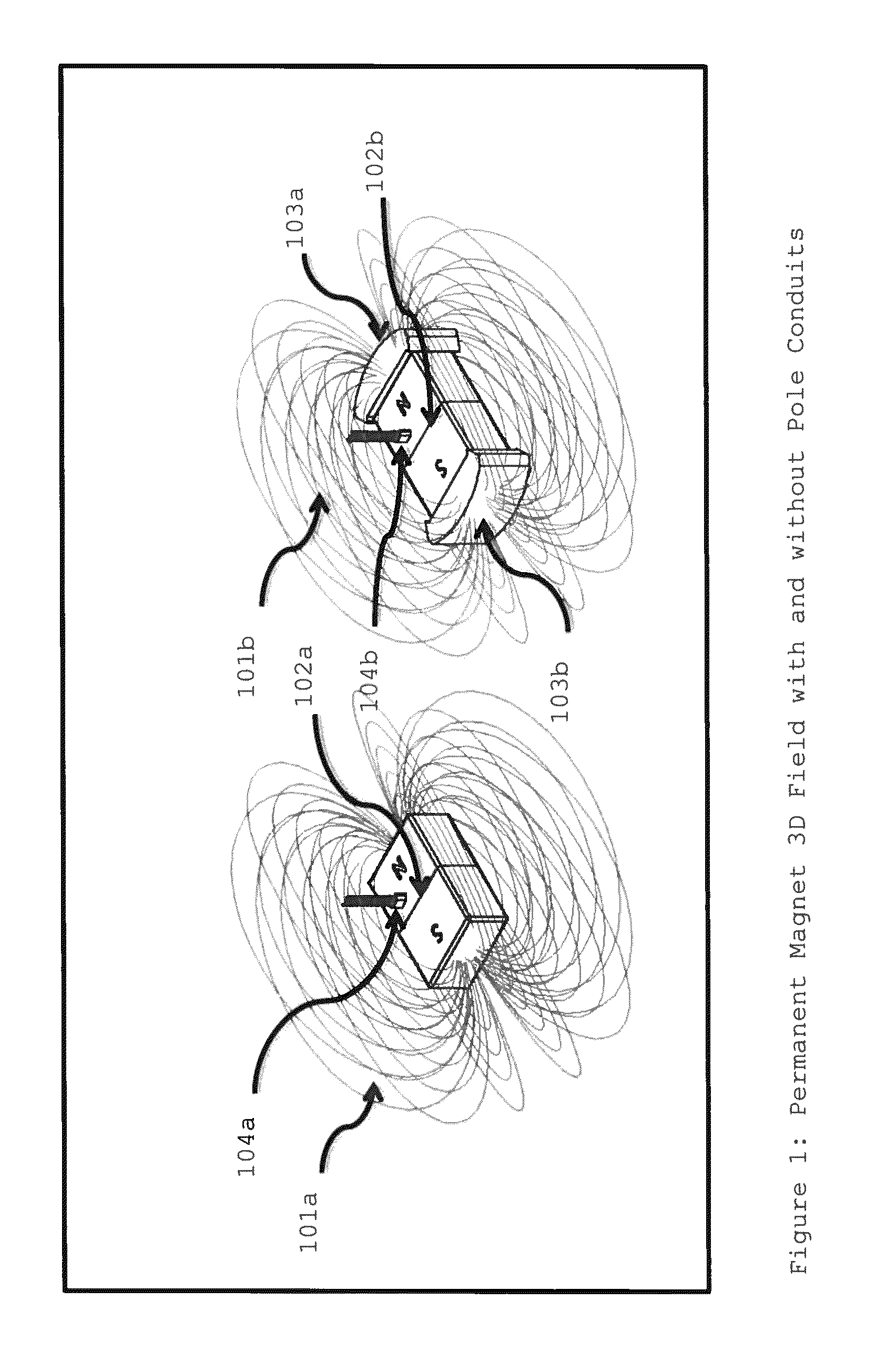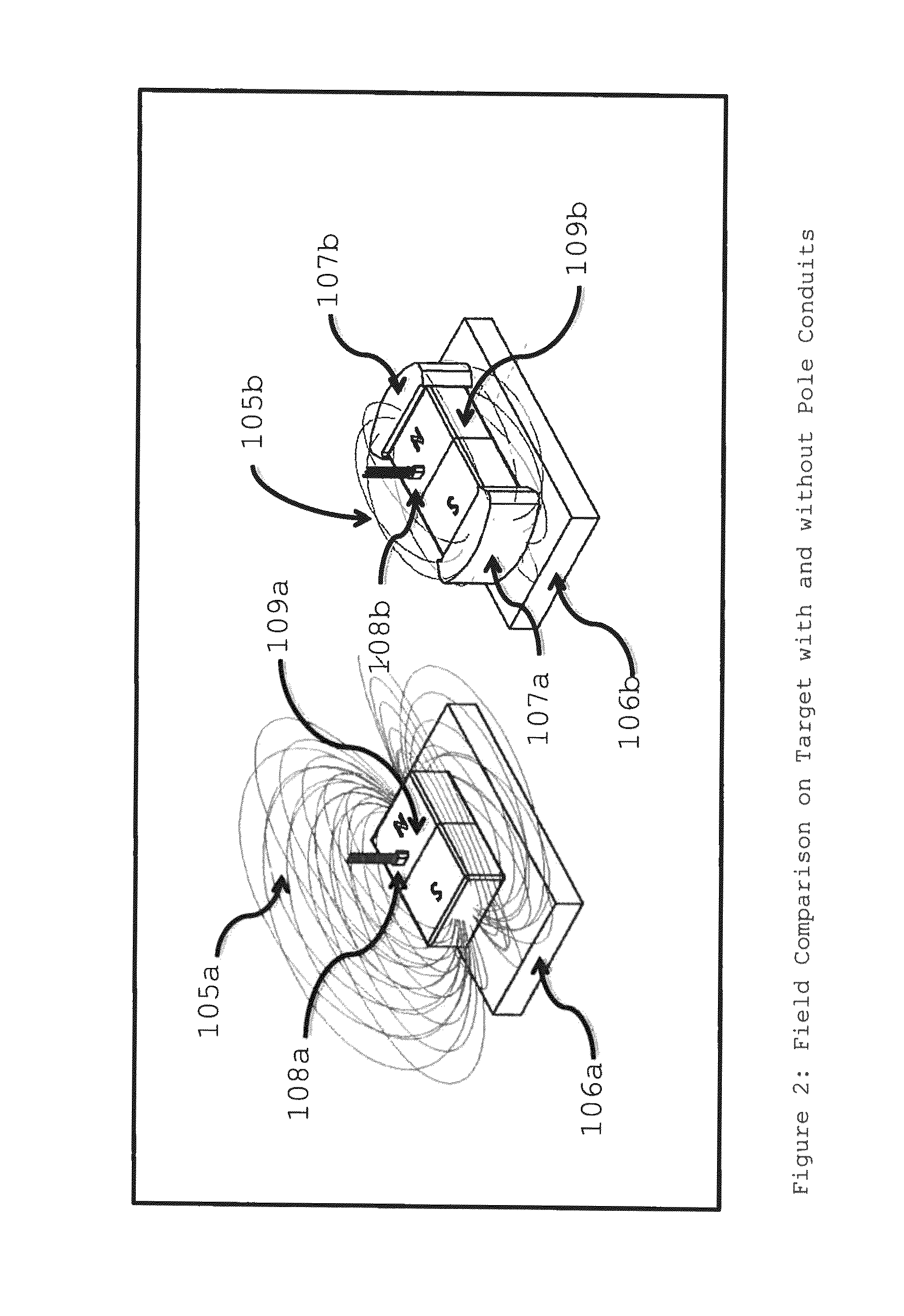Method for developing a sensing system to measure the attractive force between a magnetic structure and its target by quantifying the opposing residual magnetic field (ORMF)
a sensing system and magnetic structure technology, applied in the direction of magnetic bodies, magnetic field measurement using permanent magnets, instruments, etc., can solve the problems of distorted flux field on the target side, and achieve the effect of improving accuracy, improving accuracy, and improving accuracy
- Summary
- Abstract
- Description
- Claims
- Application Information
AI Technical Summary
Benefits of technology
Problems solved by technology
Method used
Image
Examples
Embodiment Construction
Foundation
[0031]FIG. 1 depicts two identical permanent magnets, one with pole conduits (the right side of FIG. 1) and the other without (the left side of FIG. 1). For a detailed explanation and understanding of pole conduits, refer to U.S. Pat. No. 8,183,965 B2 (Inventor Michael) (2012) and U.S. Pat. No. 8,256,098 B2 (Inventor Michael (2012). A Sensor is placed along the magnetic field line above the permanent magnet to detect the magnetic field passing perpendicularly to the magnetic field plane. Magnetic field or flux lines are depicted in three-dimensional space traveling from one pole face or pole conduit to the other. In a preferred embodiment, the Sensor is a Hall Effect Sensor.
[0032]One skilled in the art of magnetics can readily design the relative size and composition of the pole conduits. Pole conduits can be made of a wide range of ferrous materials that have a relative permeability substantially greater than the relative permeability of the permanent magnets. As an examp...
PUM
| Property | Measurement | Unit |
|---|---|---|
| thicknesses | aaaaa | aaaaa |
| outer diameter | aaaaa | aaaaa |
| outer diameter | aaaaa | aaaaa |
Abstract
Description
Claims
Application Information
 Login to View More
Login to View More - R&D
- Intellectual Property
- Life Sciences
- Materials
- Tech Scout
- Unparalleled Data Quality
- Higher Quality Content
- 60% Fewer Hallucinations
Browse by: Latest US Patents, China's latest patents, Technical Efficacy Thesaurus, Application Domain, Technology Topic, Popular Technical Reports.
© 2025 PatSnap. All rights reserved.Legal|Privacy policy|Modern Slavery Act Transparency Statement|Sitemap|About US| Contact US: help@patsnap.com



